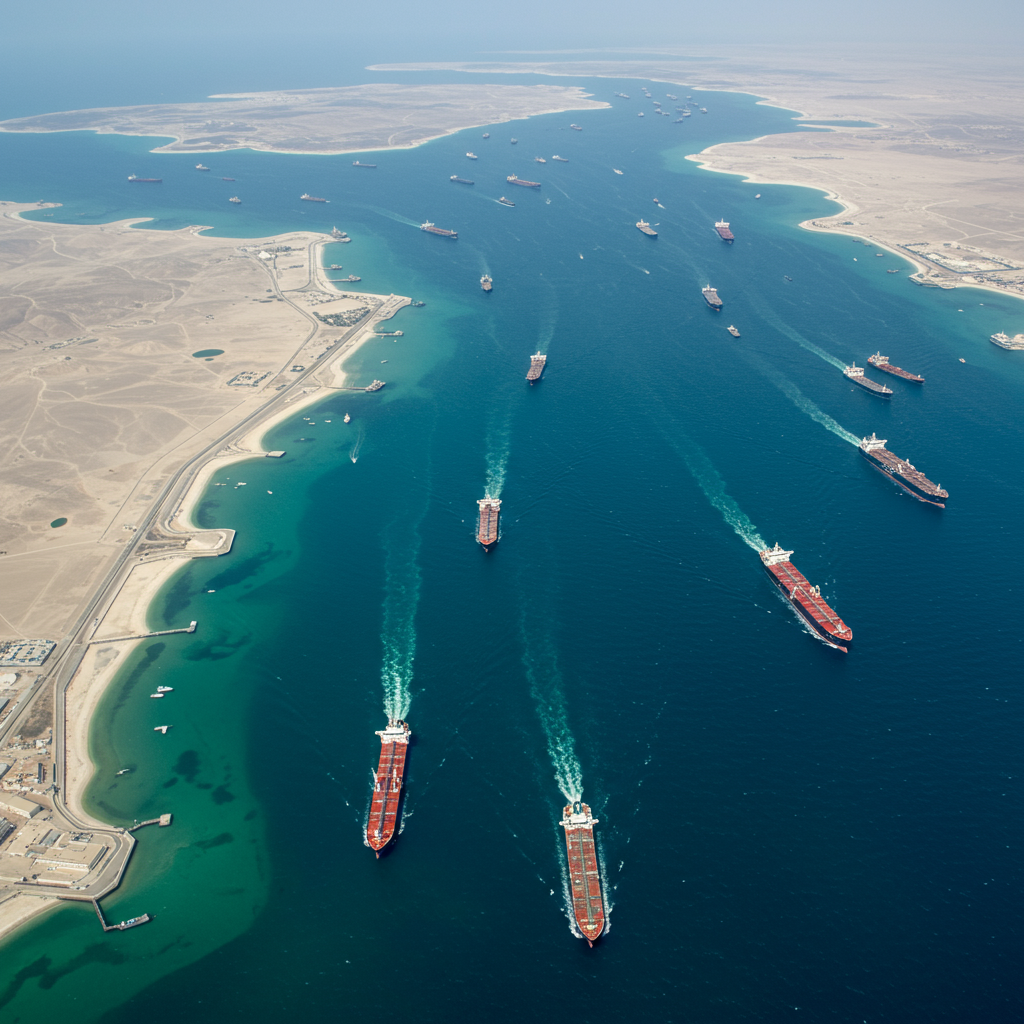The Strait of Hormuz stands as arguably the world’s single most critical waterway for global energy supplies. This narrow maritime passage, bordering Iran to the north and Oman and the United Arab Emirates to the south, connects the vast oil and gas reserves of the Persian Gulf with the Arabian Sea and beyond. Its strategic importance makes any threat to its navigability a major concern for international markets and economies.
Recent speculation, fueled by regional tensions and reports of discussions within Iran’s parliament, suggests the possibility of Tehran attempting to close the Strait. Such a move, potentially in retaliation for actions like US strikes on Iranian facilities, could trigger a cascade of severe consequences across the globe.
The World’s Premier Oil Choke Point
Despite being only about 33km (21 miles) wide at its narrowest point, the Strait of Hormuz is deep enough to handle the largest crude oil tankers. It serves as the essential exit route for oil and gas exports from major producers like Saudi Arabia, Iraq, Kuwait, Qatar, the UAE, and Iran itself.
The sheer volume of energy transiting the Strait is staggering. Approximately 20% to potentially 30% of the world’s daily oil consumption passes through this corridor. In the first half of 2023 alone, an estimated 20 million barrels of oil flowed through the Strait per day, representing roughly $600 billion in annual energy trade. Beyond oil, about one-third of the world’s liquefied natural gas (LNG) also uses this route. This concentration of vital energy flow earns it the title of the world’s most important oil transit choke point.
Profound Global Economic Fallout
Closing the Strait of Hormuz would instantly disrupt this massive flow, leading to immediate and significant consequences for the global economy.
Soaring Energy Prices: The most direct impact would be a sharp surge in global oil and gas prices due to the sudden constriction of supply. Analysts and former intelligence heads, including former MI6 chief Sir Alex Younger, warn this would be an “incredible economic problem.”
Widespread Inflation: Higher energy costs would quickly translate into inflated prices for goods and services worldwide, exacerbating inflationary pressures.
Trade Disruption: The blockade would cripple international trade, affecting supply chains far beyond energy commodities.
Market Turmoil: Stock markets would react “very nervously,” according to geopolitics experts like Bader Al-Saif, describing the situation as “uncharted terrain.”
Severe Impact on Major Economies: Countries heavily reliant on Middle Eastern energy, particularly in Asia, would be hit hardest. In 2022, around 82% of crude oil leaving the Strait went to Asian nations. China, which reportedly buys about 90% of Iran’s oil exports and imported over 1.8 million barrels per day recently, would face significant challenges. India relies on the Strait for nearly half of its crude and 60% of its natural gas imports, while South Korea gets 60% of its crude and Japan nearly three-quarters through this route. Rising energy and production costs in these manufacturing powerhouses could have ripple effects globally.
Harm to Gulf Exporters: While intended to pressure adversaries, a closure would also severely hurt the Gulf countries whose economies depend heavily on energy exports, including Saudi Arabia, which exports around 6 million barrels per day via the Strait.
How Could a Closure Be Attempted?
Under international law, coastal nations have territorial waters extending up to 12 nautical miles (13.8 miles). At its narrowest, the Strait’s shipping lanes fall entirely within the territorial waters of Iran and Oman.
Experts suggest Iran’s potential methods for attempting a blockade could include:
Laying naval mines using fast attack boats and submarines.
Launching attacks on foreign warships and commercial vessels using its regular navy and the Islamic Revolutionary Guard Corps (IRGC) navy, which operate fast boats armed with anti-ship missiles, surface vessels, semi-submersible craft, and submarines.
However, military analysts generally agree that while Iran could likely cause a temporary disruption, the US and its allies possess the naval power to swiftly re-establish the flow of maritime traffic, if necessary through military means. The US military provided escorts during the “Tanker War” in the late 1980s, preventing a full closure even then.
Why Iran Might Not Close It
Despite parliamentary approval of a motion to close the Strait, the final decision rests with Iran’s Supreme National Security Council and ultimately the Supreme Leader. While Iran has repeatedly threatened this action during past conflicts, it has never fully followed through.
Powerful arguments exist against Iran implementing such a blockade:
Economic Self-Harm: US Secretary of State Marco Rubio has called closing the Strait “economic suicide” for Iran. It would prevent Tehran from exporting its own petroleum, including from its Goreh-Jask terminal on the Gulf of Oman, which was intended to provide an alternative route but has limited capacity (around 350,000 bpd).
Alienating Key Allies and Neighbors: Energy analysts like Vandana Hari argue Iran has “little to gain and too much to lose.” Closing the Strait risks infuriating its key energy market, China, and turning its oil and gas-producing neighbors in the Gulf into outright enemies. China, a major buyer of Iranian oil, relies heavily on the Strait and would likely use its diplomatic weight to dissuade Iran.
Alternative Routes: Limited Relief
The persistent threat to the Strait has spurred some Gulf countries to develop alternative export pipelines that bypass Hormuz.
Saudi Arabia’s East-West pipeline has a capacity of up to 5 million barrels per day.
The UAE’s Habshan-Fujairah pipeline can transport 1.5 million barrels per day to a port on the Gulf of Oman.
However, the US Energy Information Administration (EIA) estimates that the combined unused capacity of these alternative routes is around 2.6 million to 3.5 million barrels per day. This capacity represents only about 15% of the oil currently shipped through the Strait of Hormuz, meaning these pipelines cannot fully compensate for a complete closure of the vital waterway.
Ultimately, while the threat of Iran closing the Strait of Hormuz remains a significant geopolitical risk with potentially catastrophic economic consequences, the self-inflicted harm and strong international opposition, particularly from key partners like China, suggest that such a drastic action remains a highly unlikely, albeit ever-present, worst-case scenario.




